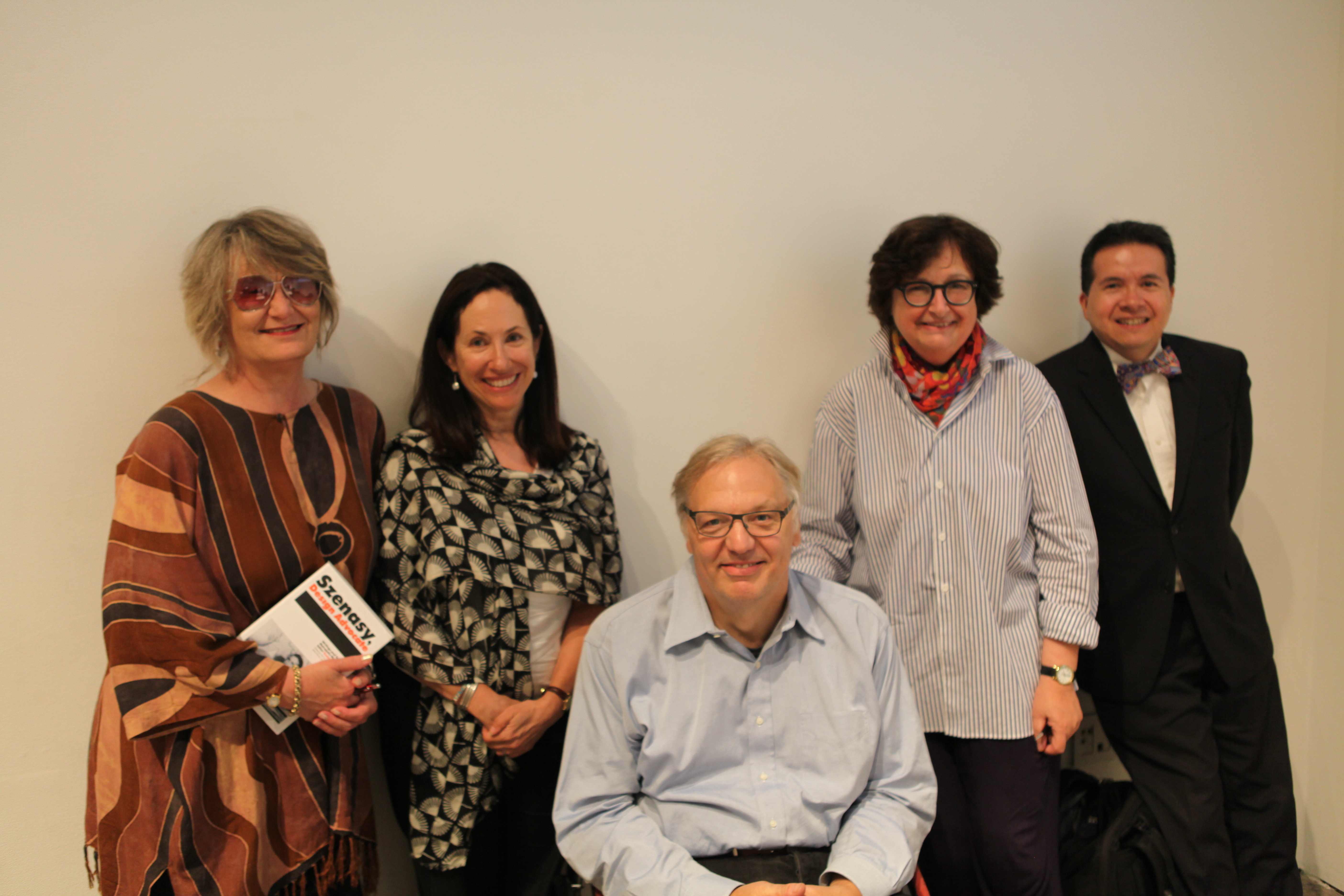by: ac
When one signs on to read a book to review, the book becomes your friend. It sits with you on the subway, it waits with you to pick up your child. In this case my new friend, Szenasy, Design Advocate, is the friend I have been looking for years. She is pragmatic, seasoned, enlightened, funny, and fully of New York City. She is the reason you moved to New York City as a youth – a friend like Susan Szenasy, Hon. AIANY (or the book) shows you the magic of the built environment. In fact, the book, edited by Ann Hubner, Akiko Busch, and Angela Riechers, is mapped out in chronological fashion and unfolds through Szenasy’s life. Each decade presents a focus or cultural event that contributed to Szenasy’s development as a critic and writer.
On 09.03.14, the Center for Architecture hosted Szenasy in conversation with the formidable John Hockenberry, who asked questions and offered some wonderfully unorthodox insights. Questions like “Who have you pissed off the most?’” and “What would you like to rant about?” prompted Szenasy to confide that the Skidmore, Owings & Merrill-designed One World Trade looks unfinished, and Hockenberry to add that he thought the top was a memorial to diabetic syringes. Both Szenasy and Hockenberry are too cultured and professional to let their opinions get too out of hand, but it certainly was a lively discussion that was appreciated by the audience. The evening aptly re-enforced the ethos of community, friendship, and the deep passion for design that Szenasy’s book constructs.
In Hockenberry’s foreword, I noted one of the clearest and most lovely paragraphs in the book about the goals of Universal Design. He states that the public can actually feel that a place is inclusive: “People intuitively understand these inherent democracies and the value this approach conveys.” Similarly, when asked a question by Szenasy, a great champion of Universal Design issues, Hockenberry gave a beautiful and, dare I say, rousing explanation of issues of cultural differences in attitude toward Universal Design and the United States’ strange regulatory tangling of this matter. He told a very simple story of a high school student designer suggesting to the MTA that if subway elevators (a major component of an accessible subway system) were to remain open in between rides, their function as public restrooms or shelters for homeless would be eliminated. This act is a powerful example of design intention changing a culture.
The book is a series of essays derived from Szenasy’s career. It is peppered with testimonials from peers that are often puffy self-testimonials of the writers’ contributions to Szenasy’s work. The resulting tone is strange. Too often, I felt the essays were perhaps too truncated or edited, particularly those derived from Szenasy’s editor’s letters in Metropolis. I enjoyed the photo essays and the collection of favorite Metropolis covers. These lend a balance to the text and establish that we are talking about the culture that Metropolis magazine has created through decades of powerful impact on the built environment. Hockenberry’s and Akiko Busch’s essays carry the poetic yet practical tone of the book, and when Szenasy speaks her mind, the level of clarity is breathtaking.
The book is a celebration and homage to Szenasy’s life work at Metropolis and advocacy for design. I wondered if it was a signal of the closing of a chapter for her. The impression that I got from Szenasy’s feisty stance at the talk (Frank Gehry’s titanium façades: “He should know better”), her opinion that a client needs to be responsible for the social contract with the public when building, and her emotional plea for the public to demand design for end-of-life issues all lead me to believe that we will have much more of our “mother of the city” in Szenasy, which, conveniently, is the definition of “metropolis.”
Annie Coggan is a principal with Coggan and Crawford Architects, and teaches at the Fashion Institute of Technology and the School of Visual Arts in New York City.
Event: Oculus Book Talk: Szenasy, Design Advocate
Location: Center for Architecture, 09.03.14
Speakers: Susan S. Szenasy, Hon. AIANY, Editor-in-Chief and Publisher, Metropolis magazine; and John Hockenberry, Journalist and Author
Organizers: AIANY Oculus Committee
Editor’s Note: Couldn’t make it to the talk? Watch it now on the Center for Architecture’s Vimeo page.









